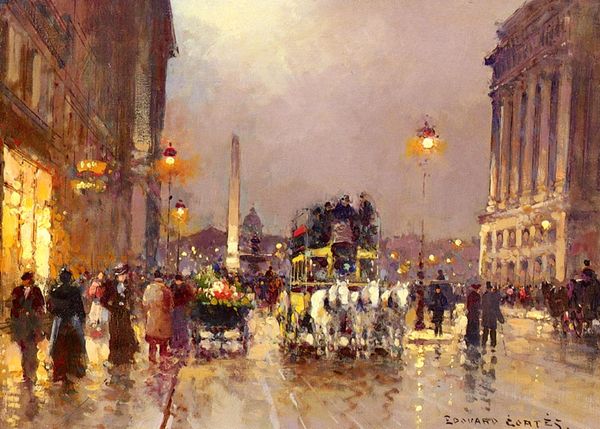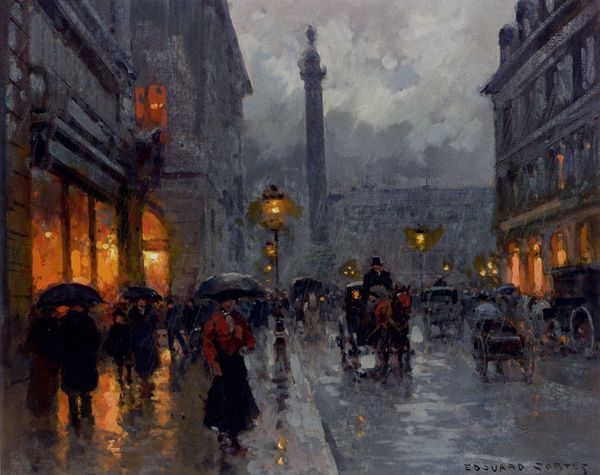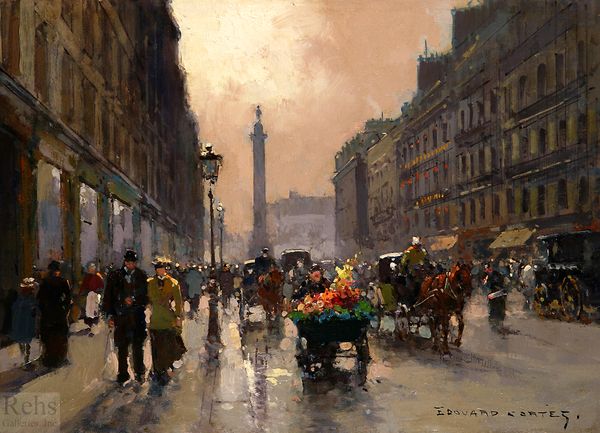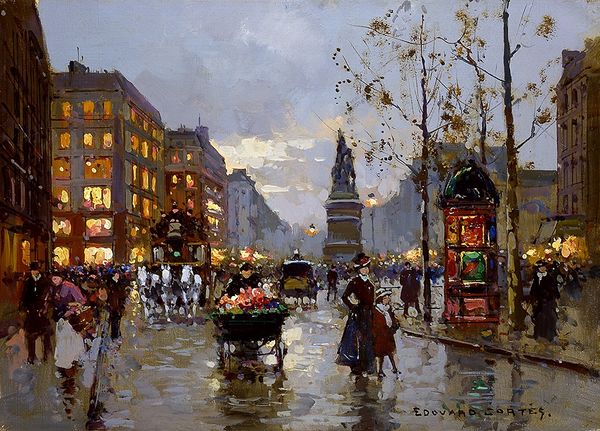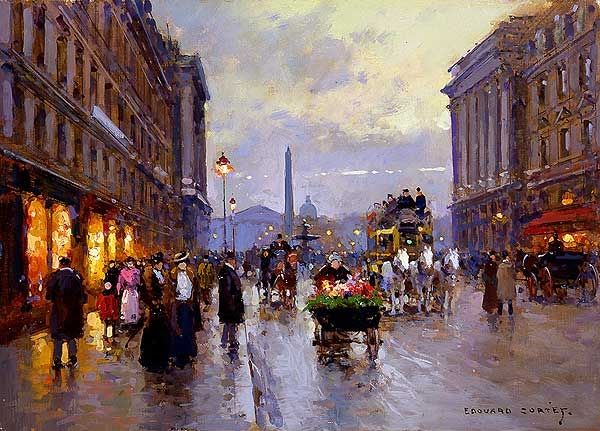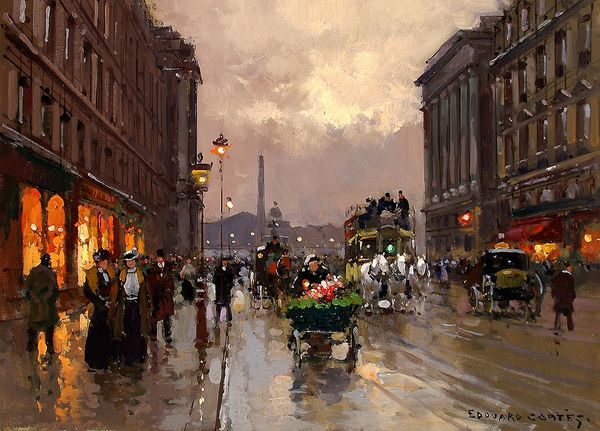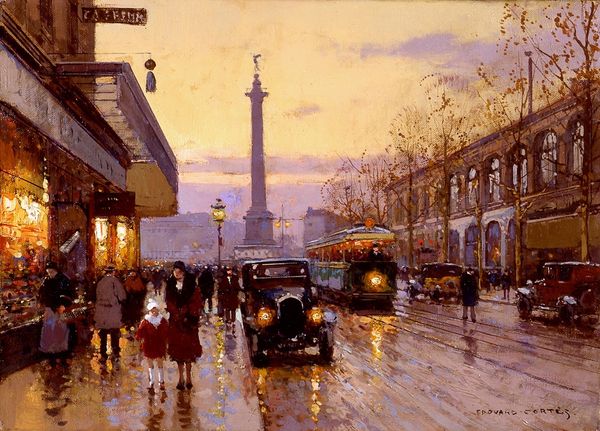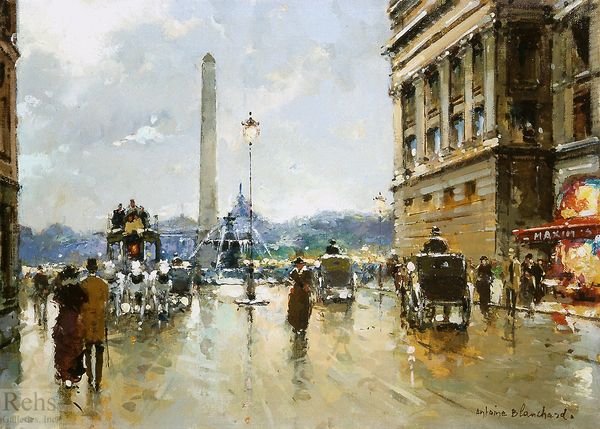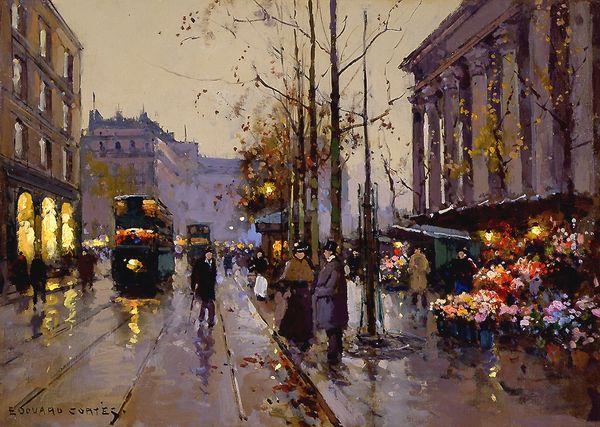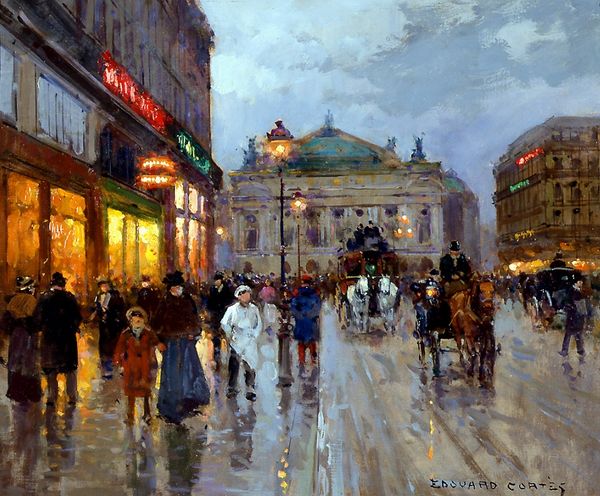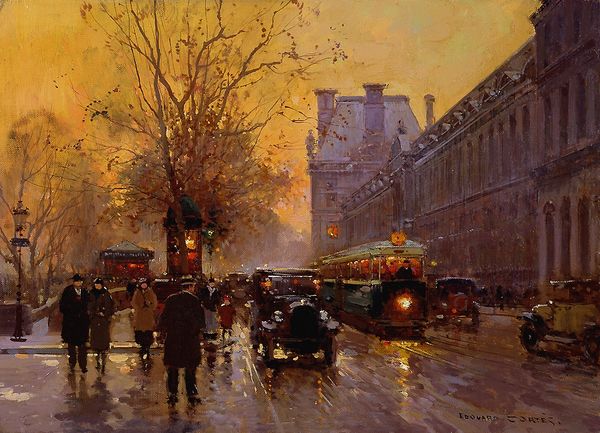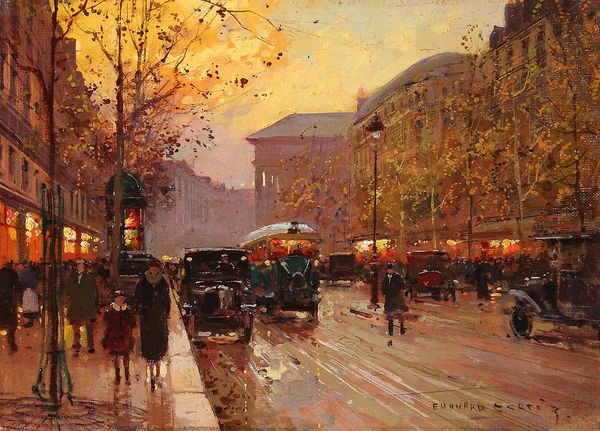
painting, oil-paint
#
painting
#
impressionism
#
oil-paint
#
oil painting
#
cityscape
#
genre-painting
#
street
Dimensions: 45.72 x 33 cm
Copyright: Edouard Cortes,Fair Use
Curator: This is a captivating cityscape by Edouard Cortes, known as "Royal Street, Consent." It appears to be rendered in oil paint, capturing a bustling urban scene. What's your immediate impression? Editor: Immediately, the pervasive grey and gold tones strike me. It feels somber, yet alive with activity. There's a palpable tension between the grandeur of the architecture and the somewhat chaotic movement of the figures in the street. I find myself wondering about the date this was made. It's a captivating snapshot. Curator: While we don't have a confirmed date, Cortes was prolific in portraying Parisian street scenes around the turn of the 20th century, frequently capturing the city's ambiance under varying weather conditions. Consider, for instance, the prominent obelisk in the distance; a clear symbol of Parisian identity, but almost obscured here. What might that suggest about Cortes's vision of the city? Editor: I think that obscured imagery reinforces a sentiment—even national identity, or collective cultural symbols, can fade into the background noise of a city. The wet street, reflecting the light of the lamps and shop windows, also creates a sense of transience. We see no specific individual faces, it speaks volumes about the city's shifting social landscape at that time. It mirrors the fleeting nature of urban experience and the emergence of modernity. Curator: Absolutely. Also, the technique here evokes the wider Impressionist movement that shaped public appetite at the time. Each visible element conveys the symbols of commercial exchange: what can be bought and sold in urban settings. I notice this most keenly on the shopfronts on the left. Do you believe this could suggest anything about contemporary power structures or the societal role of commercial imagery at the turn of the century? Editor: It does, and it also reminds me that the artist often portrayed modern street life so favorably that they became somewhat propagandist towards particular ideas of urban prosperity. One reading of the carriages in the foreground and department stores either side can be that of societal endorsement, where urban life is affirmed as something everyone shares in as a positive outcome of progress. Curator: That's a nuanced interpretation. Seeing the scene afresh through your lens underscores how social and political contexts seep into visual symbolism. Editor: And your insights, considering both individual symbols and mass movements, really illuminate what Cortes's artistic decision making might tell us about the period in which it was made. It reminds me of the ever-present dynamism—and sometimes contradiction—that resides at the heart of Parisian imagery.
Comments
No comments
Be the first to comment and join the conversation on the ultimate creative platform.
